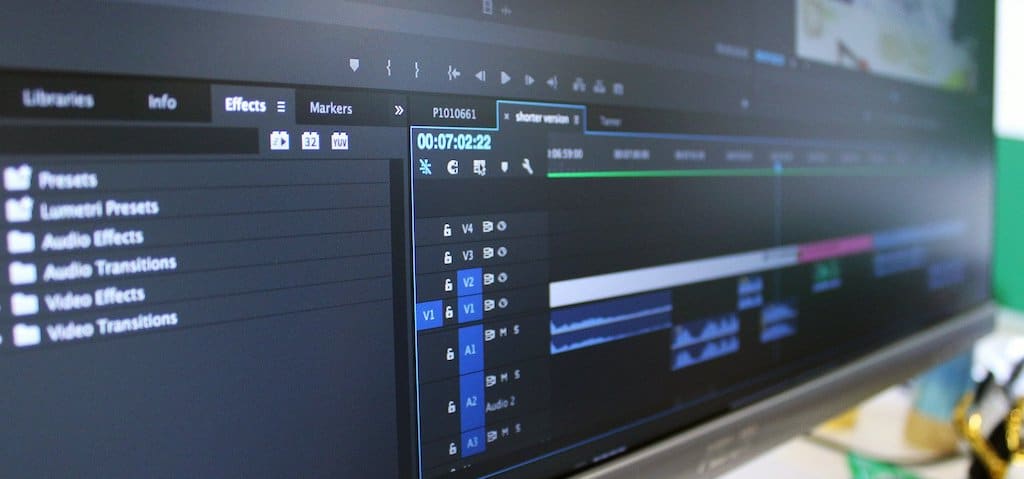Featured Image: Photo by Sam McGhee on Unsplash
Who knew video would find its way into the magazine game so pervasively. No, I’m not talking about physical magazines with videos playing on their pages (this isn’t Harry Potter), I’m talking about magazines all across the world utilizing video content on their websites, Youtube pages, and digital editions to draw in readers… or viewers… or both!
Vanity Fair, Vogue, Rolling Stone, Variety, People, and the list goes on and on. These magazines use video – not just to promote magazine subscriptions, but also as a secondary source of revenue via YouTube’s AdSense program. Any magazine can do it. Producing high-quality video is easier than ever now. Most of us have a 4K video camera in our pocket, after all.
You don’t even need to spend hundreds (or thousands) of dollars on professional video editing software. iMovie is a surprisingly versatile, and free, video editor for Macs and iOS devices; and BlackMagic’s DaVinci Resolve is an incredibly powerful editing software for both Mac and Windows. Also freet

So do it!
There are multiple ways to make video content a driver of subscriptions for your magazine. Do you have a particularly engaging article that’s getting a lot of feedback? Turn it into a video! Free footage is always easy to come by if you don’t have any of your own. The Associated Press is a great resource for video footage.
You might think that images are the most important part of a video. It is, after all, a visual medium. But viewers actually subconsciously gauge the quality of a video based on the sound. So while you can go cheap, or even free, when it comes to cameras, video editing software, and stock footage, but it is essential to invest in a decent microphone to record the voice over. Rode has a vast selection of microphones, but they may not be user-friendly. My advice for anyone who doesn’t have a ton of experience in audio recording is to get a Yeti Microphone from Blue. They’re relatively inexpensive (about $150.00), they plug right into your computer via USB, and record studio-quality audio.

So now that you’ve got all the technical aspects of production out of the way, it’s time to focus on the creative side of things. What types of articles draw attention in the video format? Just like the written word, you want something that will grab people’s attention. Something topical, of the moment, engaging, or shocking. Maybe you have an article that exposes a little known news story; or an expose on an interesting person, or even just an explanation of how something works (you’d be surprised how much people love learning things online). Any of these articles can make for great video content! And if you have an interview with someone, try to get an audio recording of it, if not video.
Once you’ve got your video all finished, here comes the hard part: getting noticed. You can always just share it on your own social channels, but you want this to be a growth agent. So YouTube, here we come! Now, anyone working in online video knows about the dreaded YouTube algorithm. This automated program will basically hide your video from the world if it doesn’t have the right keywords, if it isn’t the right length, or if it covers a topic the algorithm doesn’t like (try to steer clear of politics). Now, this isn’t a sales pitch, but here at Inovva we actually have experts to take care of this work for you. But we do have some tips for you if you’d rather do it on your own.
Video Length
The sweet spot for a video’s length is between ten and twenty minutes. Anything under ten isn’t likely to be monetized, so The Algorithm doesn’t care about, but anything over twenty-minutes is usually too long for people to watch in one sitting… which tells The Algorithm they’re not interested in the content, so it won’t push it.
KeyWords
Like much of the internet, exposure is based on keywords. Not just the tags you attach to the video while publishing, but also the title. The description. Even a pinned comment at the top of the comment section can influence whether or not The Algorithm finds your video viable. You want to use words that describe your video but are also in the news. See what’s trending on Twitter as your posting the video, and put some of those words in the video’s title and description. It can go a long way to getting noticed.
Topics to avoid.
The Algorithm is a lot like a dinner party. There are some subjects you should just avoid. Politics, religion, and sexuality. Anything in regard to those three topics will likely get you immediately put into YouTube time out. No monetization. No main page exposure. Sometimes the video will even be altogether hidden from people without a direct link. Everything else, though, is pretty much safe ground.
——




